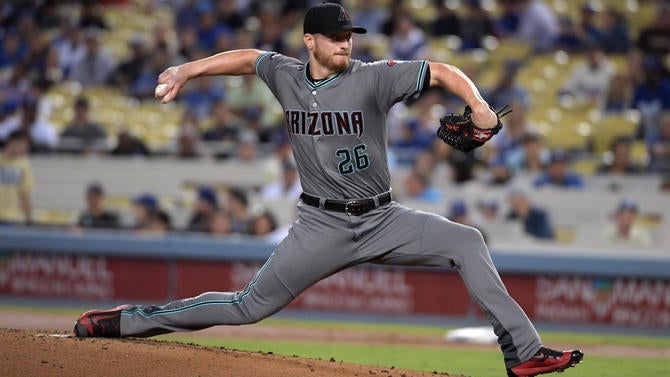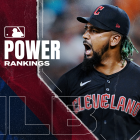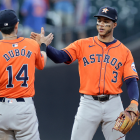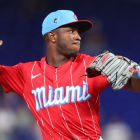Most of us outside the Diamondbacks' front office -- you, me, others -- realized the 2016 season would very likely fall short of the club's stated expectations.
Sure, they added 15 wins to their season total from 2014 to 2015. Given the bolstering of the rotation that they undertook last offseason, one could squint and see the makings of a contender. The problem is that teams that make such a vault in the standings tend to regress in the following season. It's the plexiglass principle, and teams that enjoy an uncommon union of upper-band performances and health in the season prior are especially prone to it. That describes the 2015 Diamondbacks.
This isn't to say the D-backs should've folded and sold off this past offseason -- with two wild card berths per league in play and with Paul Goldschmidt as an affordable cornerstone, contention was certainly possible. Rather, it's that the front office conducted itself as though the upward trajectory of 2015 was bound to continue. It wasn't, and the costs of those assumptions are more than "just" being on pace for 94 losses this year.
GM Dave Stewart and chief baseball officer Tony La Russa sacrificed future value in the service of present roster upgrades. That's what you do when you're angling to contend, usually, and in general terms that's a sound approach. However, it's the extent to which they sold off long-term assets in exchange for dubious near-term ones that's going to be so damaging. Consider what Stewart and La Russa have done in roughly two full seasons on the job:
- They traded Touki Toussaint, their first-round pick in 2014 (16th overall), to the Braves so that they would, in essence, take on Bronson Arroyo's contract. Afterward, Stewart in essence said he viewed Toussaint's value to be equal to his signing bonus. This betrays a gross misunderstanding of baseball economics in general and the value of cost-controlled young talent in particular. This was the first sign that Stewart and La Russa couldn't properly value their own assets.
- Speaking of not properly valuing their own assets, there is of course the already notorious Shelby Miller trade. Not only did the D-backs part with a highly useful and affordable outfielder in Ender Inciarte and Aaron Blair, then of of the top 25 or so pitching prospects in baseball, but also Dansby Swanson. Swanson was the top overall pick of the 2015 draft, and he profiles as an impact shortstop at the highest level for years to come. Miller has been an absolute disaster in 2016, but even if he'd pitched to expectations this trade would've been an egregious overpay on the part of Stewart.
- They drastically overpaid for Cuban right-hander Yoan Lopez and in part because the front office reportedly misunderstood the rules for international signings, wound up owing a 100 percent tax on the signing and extremely limiting their ability to sign international free agents for the following two signing periods.
- There's also, of course, the Zack Greinke signing. It's quite risky to commit more than $200 million to a pitcher going into his age-32 season, as the D-backs did last winter. That's especially the case when you're a team of somewhat limited coffers. As well, in signing Greinke, who'd been tendered a qualifying offer by the Dodgers, the Diamondbacks sacrificed their top pick of the 2016 draft.
- Combine all the trades, the international-market pratfalll, and that Greinke signing, and the Diamondbacks' have parted with their second overall pick in 2013 (Blair), their top overall pick in 2014 (Toussaint), their top overall pick in 2015 (Swanson, who was, again, taken No. 1 overall), and their top pick in 2016 (as compensation for Grienke signing). If you're going to punt on that much high-ceiling talent, then you better be raising some flags along the way. Instead, Arizona since the date of the Toussaint trade (June 20, 2015) is a combined 25 games under .500.
- Two of the best D-backs prospects left standing after all that, Archie Bradley and Braden Shipley, has thus far failed to develop.
In summary, the Diamondbacks since La Russa and Stewart took over have been making moves like a contender but playing baseball like a non-contender. That's a damaging combination. Throw in the possibility that Stewart may not even understand basic transaction rules, and there's little reason to think the current braintrust can fix their own mess.
Remember when the D-backs were punchlines because of Kirk Gibson's beanball skirmishes and micromanagement of his pitchers' repertoires? Such dysfunction seems quaint by comparison. If the Diamondbacks are to undertake the slow climb back to relevance, then they should clean house in the front office. The decisions that Stewart and La Russa have made since coming to power leave no other reasonable way forward.
Oh, and this ...

Those are the Diamondbacks' uniforms. They look like wet sweatpants.


















